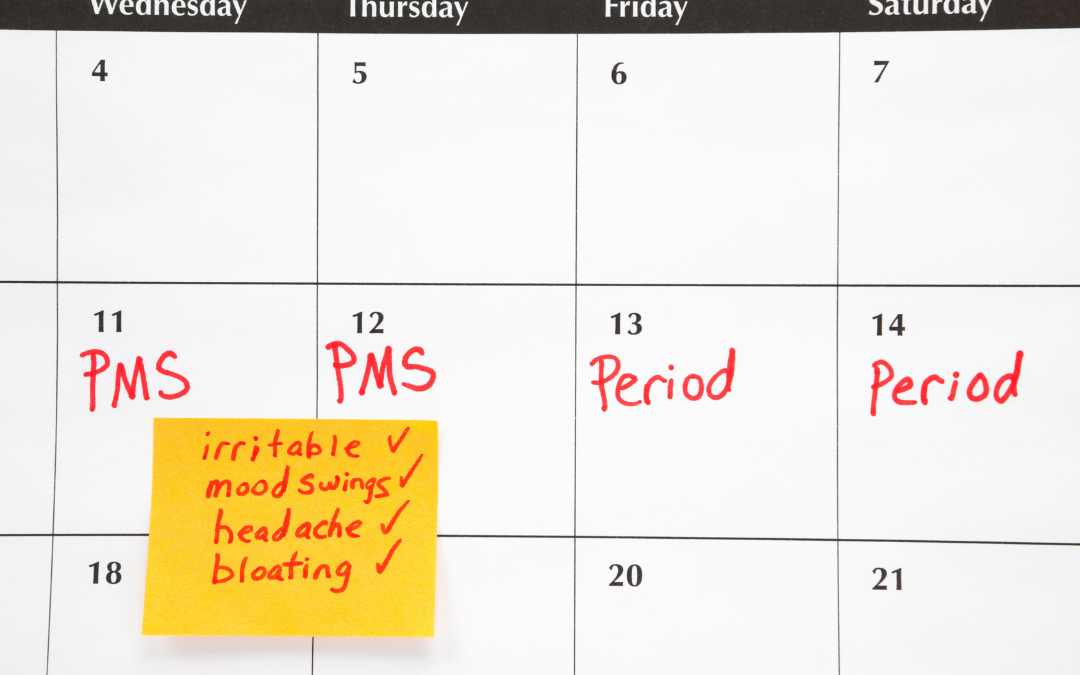Many women experience mild physical and emotional symptoms occurring prior to menstruation which is common in response to women’s hormonal fluctuations. Although annoying, these symptoms are tolerable and completely normal part of Premenstrual Syndrome (PMS).
However, what happens when your PMS symptoms severely interfere with your quality of life and daily functioning?
This may be a sign that you are experiencing Premenstrual Dysphoric Disorder (PMDD).
What is PMDD?
PMDD is a cyclic, menstrual disorder that is due to an abnormal response to normal fluctuations in reproductive steroid hormones. Similar to PMS, symptoms arise during the luteal phase (up to 1-2 weeks prior to menstruation) however are more severe. It is characterised by distinct psychological, physical, and behavioural symptoms with mood symptoms being key.
Symptoms of PMDD include (1):
Cognitive:
- Mood swings, tearfulness and sensitivity to rejection
- Irritability, anger and increased interpersonal conflicts
- Depressed mood, hopelessness or self-deprecating thoughts
- Feeling tense, anxious or “on edge”
- Difficulty concentrating
- A sense of feeling “out of control”
Behavioural:
- Loss of interest in usual activities
- Lack of energy
- Change in appetite or food cravings
- Insomnia
- Breast tenderness
- Breast swelling
- Stomach bloating
In order to be diagnosed with PMDD, you must present with 5 of the above symptoms for a minimum of 12 months with symptoms disappearing in the post-menstrual week (1). It must be acknowledged that other conditions and disorders could be the cause of these symptoms. Therefore, it is important to rule out other mood disorders such as depression, bipolar disorder or other conditions that may worsen during the premenstrual period (2).
The difference in symptoms of PMS to PMDD
PMDD is essentially PMS on steroids.
Imagine the worst symptoms of PMS, then amplify the severity and prolong the duration…
The biggest difference is that PMDD symptoms impact quality of life and interfere with school, work and relationships. See the difference in symptoms below.
The Critical Nutrients for PMDD Treatment
A holistic approach to treating PMDD is important as it affects so many factors in your life. So, what are the nutrients we need to consider in order to reduce your symptoms?
1. Magnesium
Magnesium is essentially the first line of treatment when it comes to helping to control the symptoms of PMS and PMDD (3). Having sufficient magnesium is essential in achieving healthy hormones, stable energy, balanced mood and a reduction in depression or anxiety.
Food sources of magnesium include greens, nuts, seeds and wholegrains.
2. Vitamin B6
Another key nutrient for reducing the physical and psychological symptoms is Vitamin B6. It can significantly benefit women’s hormones, particularly with symptoms such as irritability, fatigue, insomnia and mood (4).
Food sources of Vitamin B6 include salmon, chickpeas, avocado, oats, bananas and poultry.
3. Zinc
Deficiency of zinc is linked to the impaired synthesis of reproductive hormones, menstrual cycle disruption and impaired reproductive development – particularly when it comes to those with PMDD. In fact, it has been shown that patients with PMS or PMDD may present with lower concentrations of zinc in the luteal phase when compared to controls (5).
Zinc can help with reducing inflammation, reducing menstrual pain, can help to regulate your menstrual cycle, blocks excess androgens, clears acne and helps you to respond better to stress.
Food sources of zinc include oysters, red meat, poultry, legumes, nuts and seeds.
4. Calcium
Studies show that baseline serum calcium levels are lower in PMDD patients (4) . Calcium supplementation could significantly improve the incidence of PMS, PMDD and their related symptoms.
If supplementing with calcium, pairing with another nutrient such as vitamin D is recommended to avoid unmetabolised calcium which can cause issues. Food sources of calcium include dairy products, tofu, tahini, broccoli, bok choy and fortified plant-based milk alternatives.
What to do now?
Although the symptoms of PMS and PMDD can be common and deemed as normal, it is important to recognise that there are things you can do to help.
Let’s stop normalising these symptoms and move forward in helping women’s hormonal health – we should not have to suffer.
If you are experiencing the symptoms of PMDD, know that you aren’t alone. Seek guidance from a qualified health practitioner and take steps to diagnose and treat PMDD.
If this resonates with you or know someone who may, please share this blog post on so that it can aim to help more women.
Written by:
Mollie Caughey-Wade,
Clinical Nutritionist (BSc).


